Autumn conservation and wildlife update
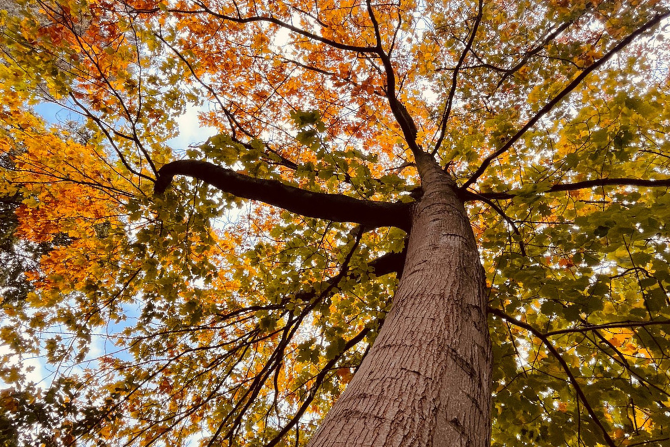
As autumn settles over Warwickshire’s Country Parks, our landscapes are glowing with golds and reds, and wildlife is on the move once again.
Orchids and other wildflowers bloom in Kingsbury’s floodplain meadows
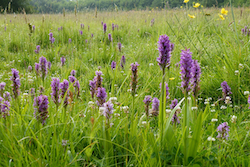
Making hay at Kingsbury Water Park
Over the summer, our new grazier joined forces with our volunteers to cut and remove hay from Kingsbury’s floodplain meadows – quite literally making hay while the sun shone! This traditional practice keeps the meadows rich in wildflowers and pollinators by preventing nutrients from building up in the soil. It also helps store carbon deep underground in the roots of the plants, meaning these species-rich floodplain meadows can play a vital role in tackling climate change.
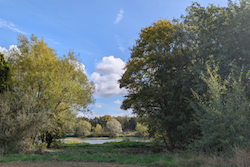
Creating ‘wind lanes’ for our lakes
Rangers and volunteers have also been clearing trees and scrub at Kingsbury to open up ‘wind lanes’ across the lakes. These gaps allow air to flow freely over the water, improving oxygen levels and helping to keep our aquatic habitats healthy. This is particularly important as our lakes are on a floodplain, meaning the levels of different substances present in the water can change hour to hour and oxygen levels can become critically low at certain times. Creating wind lanes is a simple but effective management tactic that makes a big difference to the resilience of these ecosystems.
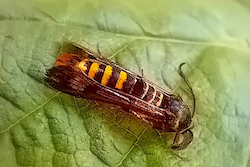
Record-breaking moths at Ryton Pools
Ryton Pools has had a record-breaking year for moths! On one warm night at the end of June, rangers counted an incredible 3,498 moths representing 303 species, the highest ever number recorded in one go at the site. Among them were two species never before recorded in Warwickshire: the Raspberry Clearwing and the Saltmarsh Knot-horn. All the data will be shared with national recorders to help track how species are responding to our changing climate.
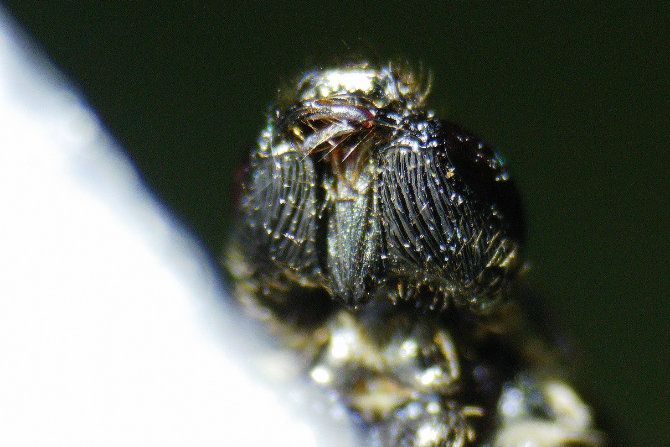
Bee bonanza
It’s also been Ryton’s best ever year for bees. Ranger George recorded 318 bees of 54 species during the park’s first full pan-trap survey, adding six new species to the site list. Across all surveys, 104 bee species were logged in 2025, 15 of which were new for Ryton. Many are recent arrivals or returning species once thought lost to Warwickshire. That includes two of our ‘grooviest’ bees on site, Grooved Mining Bee and Ridge-Cheeked Furrow Bee, both of which share the same distinctive grooves on their faces.
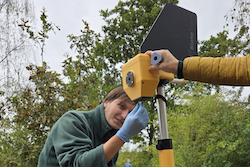
New Living Lab project with Coventry University
The team at Ryton Pools are also taking part in a new Living Labs project with Coventry University and UKCEH, testing high-tech monitoring tools like AI-powered insect traps and airDNA samplers.
These tools are being tested to detect invasive species and track biodiversity changes using AI-assisted image recognition and DNA analysis. Test runs this summer have already proved successful, and full deployment is expected for the 2026 season – so stay tuned for more updates on what these tools uncover!
Ryton will also contribute to a national PhD project led by Oxford University researcher Rona Learmonth, exploring how rising temperatures are affecting the life cycles of the Winter Moth (Operophtera brumata). Ten female moths will be collected to analyse how local populations are adapting their hatching times to match food availability — a fascinating insight into evolution in action.
Meanwhile, new baited pitfall traps for recording Carabid and Carrion beetles have uncovered some tiny treasures – including Kissister minimus, a 2mm beetle last recorded in Warwickshire more than 125 years ago.
Looking ahead
As the leaves fall and the air turns crisp, it’s a great time to explore our parks. Keep an eye out for fungi emerging through the leaf litter, flocks of migrating birds, and the rich colours of a true autumn ‘mast year’ with oaks and beeches heavy with fruit.
Our ranger teams will soon be starting their winter work programmes, continuing to care for Warwickshire’s wonderful wild spaces so they can thrive all year round.
Come and enjoy the season with us – and don’t forget to share your sightings by tagging us on social media or emailing parksphotography@warwickshire.gov.uk.



